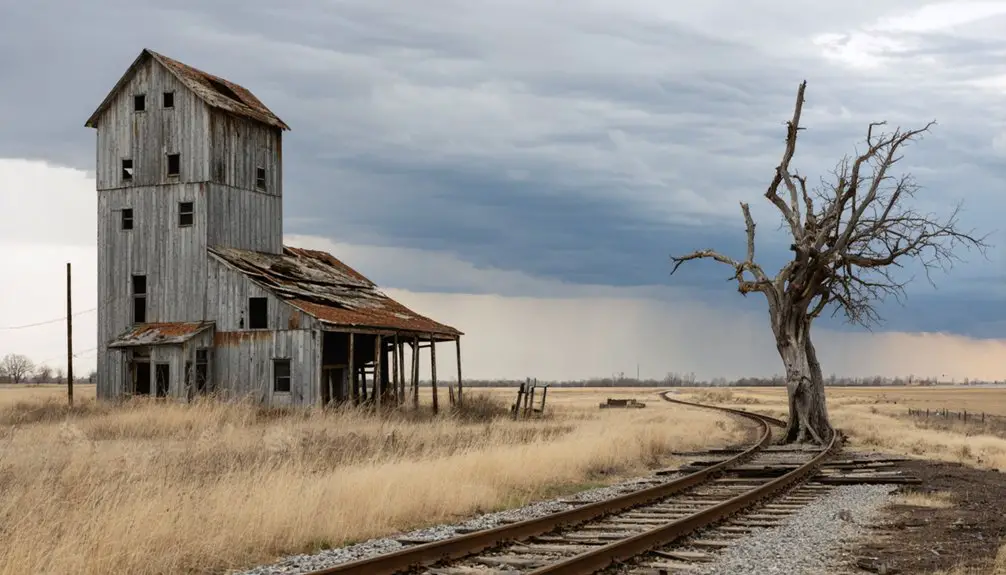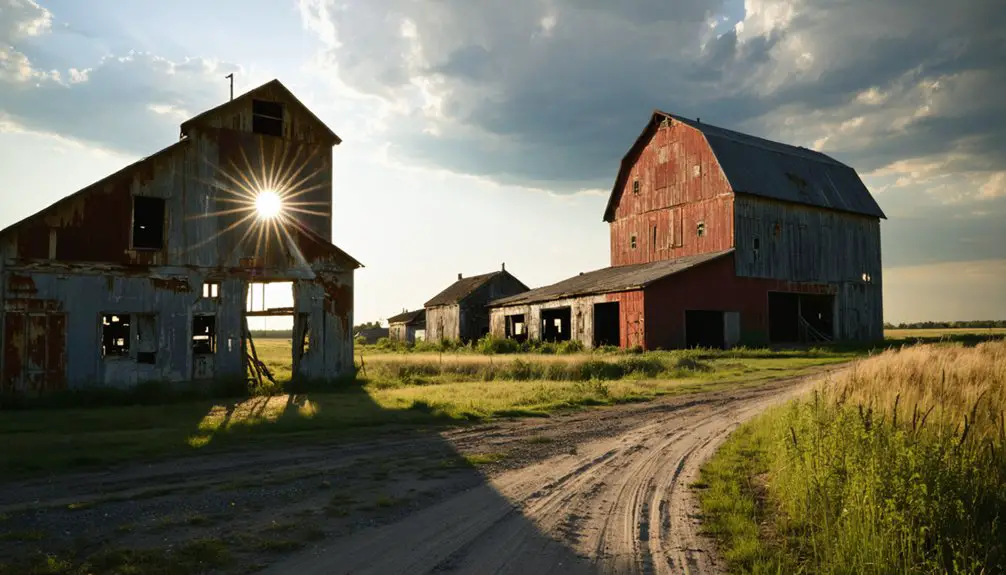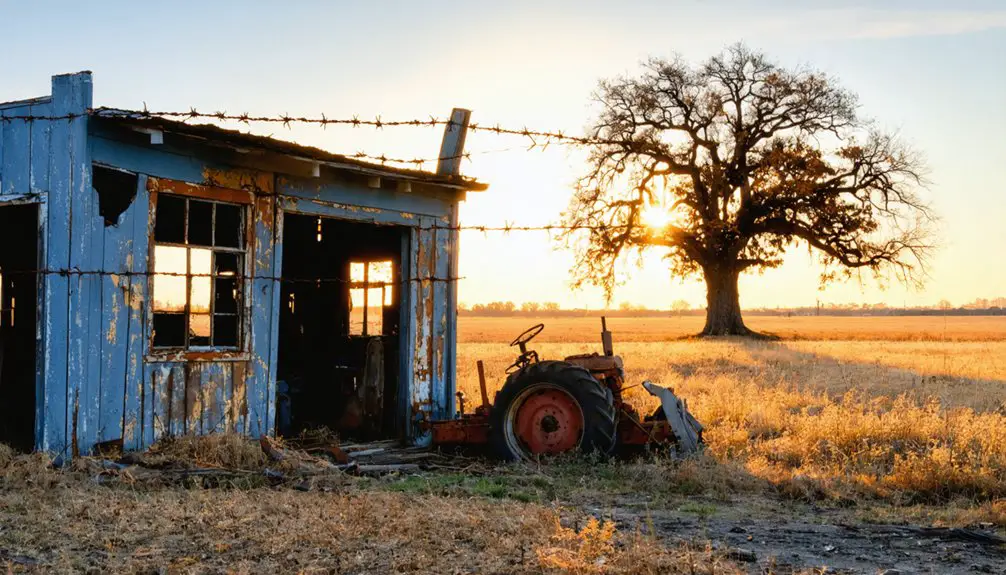The name Minnesota comes from a Dakota-Indian word meaning “sky-tinted water.” Minnesota is in the Midwestern United States with a population of 5.3 million. The Union admitted Minnesota on May 11, 1858, as the 32nd state.
There are approximately 58 ghost towns in Minnesota. A city becoming uninhabited doesn’t happen overnight. Minnesota is a state that has many stories about its ghost towns.
The rivers and lakes of Minnesota are an essential part of this beautiful state. People have nicknamed Minnesota “the land of 10,000 lakes,” but the numbers indicate there are many more bodies of water than 10,000. Minnesota is very close to Lake Superior and has the third largest river globally, the Mississippi.
Dorothy, Minnesota
Dorothy is in Section 5, Louisville Township, Red Lake County, Minnesota. Dorothy’s founding was in the year 1898. Dorothy began as a city with a railroad station that was added between 1916-1917. After the Northern Pacific Railroad extended its reach from Tilden Junction to Winnipeg, Dorothy’s railroad station became a reality. This growth prompted the construction of a new line through Red Lake Falls.
For a time, Dorothy was a very prosperous town. It had a grain elevator, a Catholic church, a school, and residential homes. The former town also had a post office run by Joseph Mathews that opened on February 11, 1898. At that time, Dorothy absorbed the historic town’s remains across the river.
The town’s decline and bankruptcy began in 1973. The main reason for the town’s demise was the railroad’s abandonment. In addition to the railroad closing, the grain elevator also closed. These two events were significant enough to act as the triggers for Dorothy to become a ghost town.
On October 24, 2014, the old church burned entirely. A person was burning dry leaves, and this caused the structure to burn. There are no records of Dorothy having any current inhabitants.
Splitrock, Minnesota
Splitrock is in Beaver Bay Township, Lake County, near the Split Rock River, Minnesota. Founded in 1899, Splitrock was a lumber camp of the Split Rock Lumber Company. This camp employed 350 men logging red and white pine.
This lumber company controlled the railroad, the port, the coal dock, and the store, where inside, there was a post office. The company built a 10-mile railroad to transport the logs cut by the workers to the river’s mouth. The workers dumped the logs from the river into the lake, where the tugboat towed them to a sawmill.
Splitrock became a ghost town in 1906. When there was no more valuable timber to cut, logging operations ceased. The company dismantled the city and the railroad. The town is now within the boundaries of Split Rock Lighthouse State Park and has no residents. The only evidence that a town once existed is the pillars of the pier still visible at the river’s mouth.
Elcor, Minnesota
Elcor is in the Mesabi Iron Range, near Gilbert, St. Elcor County, Minnesota. Elcor’s founding was in the year 1897. In 1890, the seven Merritt brothers discovered minerals near Mountain Iron. This discovery led to a growth in iron mining in the Mesabi Range.
The Elba mine opened in 1897, and the town of Elcor built its foundation under the direction of Don Bacon, the president of the Minnesota Iron Company. Then in 1901, the Iron Company opened a second mine called the Corsica.
The city of Elcor originally had the name Elba. Still, it later changed its name to Elcor, a product of combining the first syllable of both mines. At Elcor’s prosperity, the town had two churches, a post office, a general store, an elementary school, a railroad station, and its security corps.
By this time, its population had reached almost 1,000. Elcor was a mining town. The mining company built the city to house the workers. These people owned their homes, but the land belonged to the mining company.
Elcor became a ghost town in 1956. When the Minnesota Iron Company closed the Corsica mine in 1954, it ordered the workers to vacate the property to sell the land, marking the town’s demise in 1956.
Residents of the company-owned homes could buy their homes at meager prices, provided they moved them out of town. Many needed much of their life savings to move elsewhere. People had to move their homes in caravans up and down the road leaving the foundations empty. Most Elcor residents bought land in the surrounding communities.
After a few months following the official announcement of Elcor’s fate, land prices rose astronomically. Land initially priced at $75 went for as much as $500. Although others made their homes near McKinley, most of the remaining families moved about two miles west of Gilbert.
Manganese, Minnesota
In Crow Wing County, Manganese is in the Cuyuna Iron Range, Wolford Township, about 2.5 miles north of Trommald, Minnesota. Manganese was established in 1920.
Manganese was a mining community that earned its name for the abundance of ore found in the town’s vicinity. Manganese was on the Trommald Formation, the central ore-producing unit of the North Range district of the Cuyuna Iron Range.
This location was unique due to the amount of manganese and iron. To further illustrate this point, the Trommald formation and the adjacent Emily district constitute the largest manganese resource in the United States.
Manganese inhabitants were mostly immigrants fleeing natural disasters and social and political conflicts of late 19th and early 20th century Europe. In the city’s heyday, by 1919, Manganese had two hotels, a bank, two grocery stores, a barbershop, a showroom, and a school. At that time, Manganese had a population of 600.
Manganese became a ghost town in 1961. After World War I, the town’s population entered a phase of steady decline as mining operations closed. In addition, Manganese never had paved roads; all of its streets were dirt or clay. The spring rains came. So the bogging down of all streets contributed to the abandonment of the community and its formal demise in 1961.
Forestville, Minnesota
Forestville is in Fillmore County, Minnesota, with the communities of Wykoff to the northwest and Preston to the northeast. Forestville’s founding was in the year 1852.
Brothers-in-law William and Felix Meighen opened several general stores. As more people came to Forestville, the town opened a blacksmith shop, a cabinet shop, sawmills, farms, stores, grist mills, a post office, and hotels.
Forestville became a ghost town in 1910. The population began to decline with the arrival of the railroad. The railroad caused many families to leave town. Businesses began to close, and the Meighen family closed their store doors, which marked the town’s demise.
A Final Thought On Ghost Towns In Minnesota
A ghost town, or abandoned town, is a community that once had homes, roads, and infrastructure. These towns are proof of the passage of man’s settlement through unspoiled areas. Minnesota is a state full of these towns.
A common factor that leads to a town becoming a wilderness area is the absence of economic activity to support it. Natural disasters also contribute to the creation of ghost towns. Minnesota is full of these living settlements. Once home to communities today is relics of past realities.



